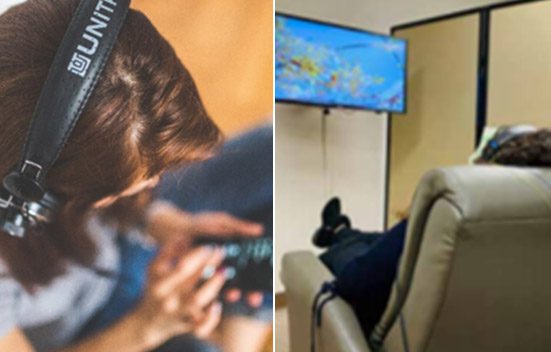While brain imaging in ADHD patients shows variations in areas such as the amygdala and prefrontal cortex compared to typical people, these variations vary between individuals.
Each brain is unique!
Today researchers say it is neuro-scientifically incorrect to say, “This area in your brain is different”, We prefer the approach that says, “These centers function differently!”.
Many neuroscientists conclude that most of the chemical imbalance in people with ADHD occurs in the prefrontal cortex, where the neurochemicals for learning and attention, such as dopamine and norepinephrine, may be out of balance.
The brain in balance behaves, learns, and focuses. A brain out of balance misbehaves, mislearns, and can be quirky when it comes to impulse control, decision-making, and general attention and behavior.
HOW MANY PEOPLE IN THE US HAVE ADHD?
Scary Statistics
Between 2009 and 2019 the number of children labeled as having ADD or ADHD more than doubled, and the use of prescription medicines to treat ADHD tripled.
Approximately 10 % of school-age children are now taking prescription medicines for their ADHD.
80 % of all ADHD prescriptions worldwide are issued in the United States!
ADHD IS A DIFFERENCE, NOT A DISORDER
This is the first and most crucial point to understand says Dr. Sears. It is often a description of the person’s learning behavior, and focus challenges, rather than a diagnosis of something wrong with you. Yet it can become debilitating depending on your living, schooling, world environment, and lifestyle, exercise, attitude, and nutrition. ADHD is a description, not a diagnosis. Thomas Edison, the light bulb inventor, and lifelong innovator had a typical profile of someone with ADHD.
ATTENTION DEFICIT-NOT. Rather than having an “attention deficit” people with ADHD more accurately have “selective attention”. The minds of bright and quirky kids and adults tune out facts, lessons, assignments, and jobs that seem boring or irrelevant, instead wandering to more excitement about designing a better computer, rather than a boring boardroom discussion with no immediate relevance to their daily living.
ADHD AND THE ABILITY TO HYPERFOCUS!
Many kids with ADHD suffer from what we call bright bored boy syndrome.
If ADHD kids find the conversation, or lesson irrelevant, she/he is going to get hyper and misbehaved, because the information being taught simply doesn’t fit how her/his brain is wired.
Science is discovering that girls with ADHD are less likely to be impulsive, disruptive, or hyperactive, instead their focus problems tend to manifest as “daydreaming” or seeming “spacey”.
Note that it has been seen that many students labeled with ADHD once put into a more challenging class with a teacher that picked their interest, their ADHD disappeared or at least improved.
IS THE BRAIN’S KID THE PROBLEM?
We more and more discover that the problem is not the kids but more a mismatch between how that child’s brain is wired to learn and how it is being forced to learn. While some children can survive that mismatch and still succeed, others can’t. But should they be forced to? We don’t think so!
SOME CHANGES TO MAKE IF POSSIBLE.
Standing desks to avoid the “sitting disease”, getting more fresh air and natural sunlight, and eating only “smart food”, can make a big difference. We’ll talk about these smart food new findings in another blog.
Try to channel instead of change and celebrate his/her uniqueness instead of drugging the disorder.
MOVEMENT MELLOWS THE MIND
Movements also quiet two other features of ADHD, distractibility, and impulsivity. The minds of people with hyperactivity are prone to be scattered, with many ideas popping into them at once, thanks to that hypersensitive amygdala. They often act before they think, leading to impulsive behavior.
And if all these ideas are not sufficient or not applicable, call us. Neurofeedback sessions and our tailored programs are particularly efficient to help kids or adults with ADHD. Neurofeedback sessions don’t change the good functioning of your brain, neurofeedback focuses on the dysregulated brain waves to help your brain to self-regulate, re-balance itself and achieve peak performance.
MORE THAN ADHD?
Lots of our ADHD clients experience Anxiety, panic attacks, depression, and or sleep issues as well as their ADHD. By addressing the whole brain our programs address everything that needs improvement. Our programs including neurofeedback sessions are tailored to your special needs and with our regular evaluations, we will know how your brain has been impacted.
The good news? Our program will support your brain to re-program itself. Nothing is hard-wired! anything can be changed, and your brain can function optimally to make you even more successful in life and relationships, or your studies.
Neurofeedback is well scientifically documented as having long-lasting results! Better than medications that will have devastating side effects quickly or in the long run!
With our program, you can add ADHD coaching sessions. We will guide you to the right coach for you, we love to help.
Now let’s look at the step-by-step to alleviate ADHD- at all ages as per Dr. Sears.
 JOURNAL WHAT TRIGGERS ADHD BEHAVIOR
JOURNAL WHAT TRIGGERS ADHD BEHAVIOR
1. THINK OUTSIDE THE BRAIN FOR HIDDEN MEDICAL CAUSES OF ADHD. Make sure the cause of ADHD isn’t completely outside the brain, which is often the case, The most common “causes” or triggers of ADHD are:
- Lack of smart nutrition
- Lack of smart movement
- Lack of smart sleep
Do some detective work looking for these common contributors!
2. SMARTEN YOUR NUTRITION
New insights suggest that ADHD may be triggered by neuroinflammation. Today’s question is could ADHD begin in the gut? Anyhow the best thing to do is go clean and green, go sugarless, and go fish (or omega 3 supplements if you want to be vegan or vegetarian). Anyhow choose food “medicine” before prescription medicine.
3. BEGIN THE DAY WITH A BRAINY BREAKFAST. Today’s research found that eating a brainy breakfast prepares the brain to focus, instead of getting it hyped up and stressed by sugar spikes and falls.
4. PREVENT “THE SITTING DISEASE” AND “THE INDOOR DISEASE”
The more hours per day someone with ADHD moves their bodies and spends outdoors, the lower the incidence and severity of the learning and behavior problems.
5. MATCH THE WORKING AND LEARNING ENVIRONMENT TO THE PERSON
Children deserve smarter classroom formats and teaching styles than the ones they get. Lobby for learning-friendly classrooms! Researchers at the University of Illinois showed that when students did their activities outside or at least viewed greenery, ADHD behavior dialed down!
6. TAKE MEDITATION BREAKS. Meditation benefits areas in the brain that promote focus and sustained attention, which is why taking mini-meditation breaks throughout the day could help teens and adults labeled with ADHD.
7. SLEEP WELL. ADHD and poor sleep are partners in mental unwellness, and it is one of the most overlooked triggers of ADHD. The good news here again is neurofeedback and our tailored brain session programs help the brain to learn or “re-learn” how to sleep deeply and dream. Look at our Newsletter on sleep
8. ENJOY THE “CARRYOVER EFFECT”. This is one of the most important “treatments” that can be “prescribed”: discover your child’s special something. Every child is wired with at least one talent or hobby “special something” they enjoy doing – music, art, sport, acting, and so on. Once you have identified it, run with it!
Suppose you’ve made all these smart changes described above, and still see little improvement in focusing and behavior call us.
Neurofeedback sessions, particularly with our “specific brain’s program” is your solution.
CELEBRATE THE DIFFERENCE! ENJOY THE SUN!





